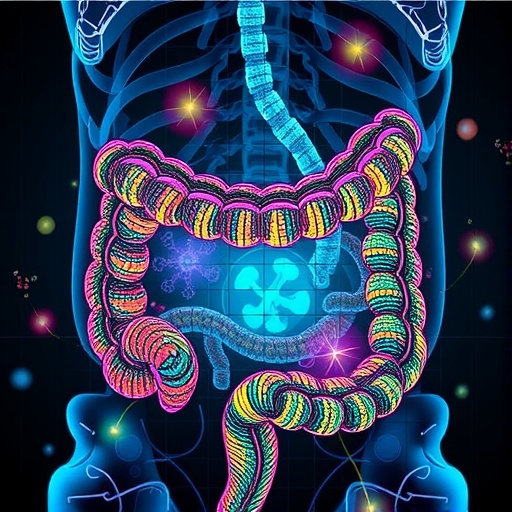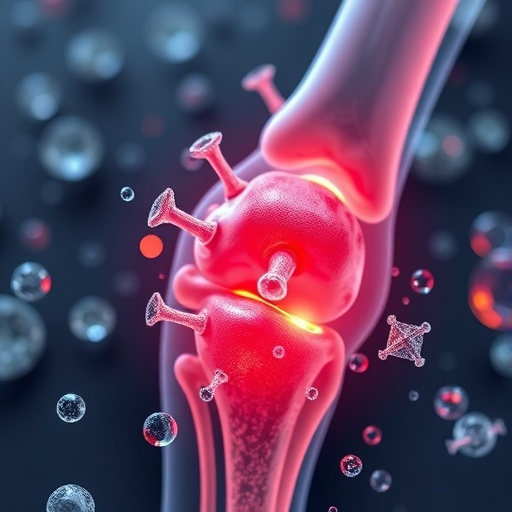
Credit: ATS
April 20, 2020–New guidance is available for physicians who must go through a number of steps to provide a probable diagnosis of sarcoidosis – an inflammatory disease that affects the lungs, lymph glands, and other organs. The American Thoracic Society has published an official clinical practice guideline in which a panel of experts strongly recommended a baseline serum test to screen for hypercalcemia, a potentially serious disease manifestation, along with 13 conditional recommendations and a best practice statement to improve diagnosis and detection of sarcoidosis in vital organs. The complete guideline detailing these recommendations was posted online ahead of print in the American Journal of Respiratory and Critical Care Medicine.
“There are no universally accepted measures to determine whether each diagnostic criterion has been satisfied,” said Elliott D. Crouser, MD, co-chair of the guideline committee and professor of pulmonary, critical care & sleep medicine, The Ohio State University Wexner Medical Center.
“Therefore, the diagnosis of sarcoidosis is never fully certain.”
The diagnosis of sarcoidosis is not standardized, but based on three major criteria: a compatible clinical presentation, finding non-necrotizing granulomatous inflammation in one or more tissue samples, and the exclusion of alternative causes of granulomatous disease. In this new clinical practice guideline, an expert panel conducted systematic reviews and meta-analyses to summarize the best available evidence.
The multidisciplinary panel appraised this evidence using the Grading of Recommendations, Assessment, Development and Evaluation (GRADE) approach, and discussed their findings. They then formulated and graded recommendations for or against various diagnostic tests after weighing desirable and undesirable consequences, certainty of estimates, feasibility and acceptability. The following recommendations were agreed upon for each of the most significant clinical considerations:
Lymph node sampling
- 1. In patients for whom there is a high clinical suspicion for sarcoidosis (e.g., Löfgren’s syndrome, lupus pernio, or Heerfort’s syndrome), we suggest NOT sampling lymph nodes (conditional recommendation, very low-quality evidence).
2. For patients presenting with asymptomatic bilateral hilar lymphadenopathy, we make no recommendation for or against obtaining a lymph node sample.
3. For patients with suspected sarcoidosis and mediastinal and/or hilar lymphadenopathy for whom it has been determined that tissue sampling is necessary, we suggest EBUS-guided lymph node sampling, rather than mediastinoscopy, as the initial mediastinal and/or hilar lymph node sampling procedure (conditional recommendation, very low-quality of evidence).
Screening for extra-pulmonary disease
- 1. For patients with sarcoidosis who do not have ocular symptoms, we suggest a baseline eye examination to screen for ocular sarcoidosis (conditional recommendation, very low-quality of evidence).
2. For patients with sarcoidosis who have neither renal symptoms nor established renal sarcoidosis, we suggest baseline serum creatinine testing to screen for renal sarcoidosis (conditional recommendation, very low-quality of evidence).
3. For sarcoidosis patients who have neither hepatic symptoms nor established hepatic sarcoidosis, we suggest baseline serum alkaline phosphatase testing to screen for hepatic sarcoidosis (conditional recommendation, very low-quality of evidence).
*(This is a partial list. You may read the full recommendations online.)
Diagnostic evaluation of suspected extra-pulmonary disease
- 1. For patients with extra-cardiac sarcoidosis and suspected cardiac involvement, we suggest cardiac magnetic resonance imaging, rather than positron emission tomography or transthoracic echocardiography, to obtain both diagnostic and prognostic information (conditional recommendation, very low quality of evidence).
2. For patients with extra-cardiac sarcoidosis and suspected cardiac involvement who are being managed in a setting in which cardiac magnetic resonance imaging is not available, we suggest dedicated positron emission tomography, rather than transthoracic echocardiography, to obtain diagnostic and prognostic information (conditional recommendation, very low quality of evidence).
3. For patients with sarcoidosis in whom pulmonary hypertension is suspected, we suggest initial testing with transthoracic echocardiography (conditional recommendation, very low-quality evidence).
*(This is a partial list. You may read the full recommendations online.)
This guideline was developed by an ad hoc committee of experts from the American Thoracic Society with guidance from experienced methodologists to objectively identify and summarize the best available evidence on the diagnosis of sarcoidosis.
Dr. Crouser noted, “The quality of evidence was poor in most cases, reflecting the need for additional high quality research to guide clinical practice.”
###
The ATS has published nearly 20 clinical practice guidelines on various conditions, ranging from allergy and asthma to TB and other pulmonary infections. For ATS guideline implementation tools and derivatives, go here.
About the American Journal of Respiratory and Critical Care Medicine
The AJRCCM is a peer-reviewed journal published by the American Thoracic Society. The Journal takes pride in publishing the most innovative science and the highest quality reviews, practice guidelines and statements in pulmonary, critical care and sleep medicine. With an impact factor of 16.494, it is one of the highest ranked journals in pulmonology. Editor: Jadwiga Wedzicha, MD, professor of respiratory medicine at the National Heart and Lung Institute (Royal Brompton Campus), Imperial College London, UK.
About the American Thoracic Society
Founded in 1905, the American Thoracic Society is the world’s leading medical association dedicated to advancing pulmonary, critical care and sleep medicine. The Society’s more than 16,000 members prevent and fight respiratory disease around the globe through research, education, patient care and advocacy. The ATS publishes four journals, the American Journal of Respiratory and Critical Care Medicine, the American Journal of Respiratory Cell and Molecular Biology, the Annals of the American Thoracic Society and ATS Scholar.
Media Contact
Dacia Morris
[email protected]
Related Journal Article
http://dx.





